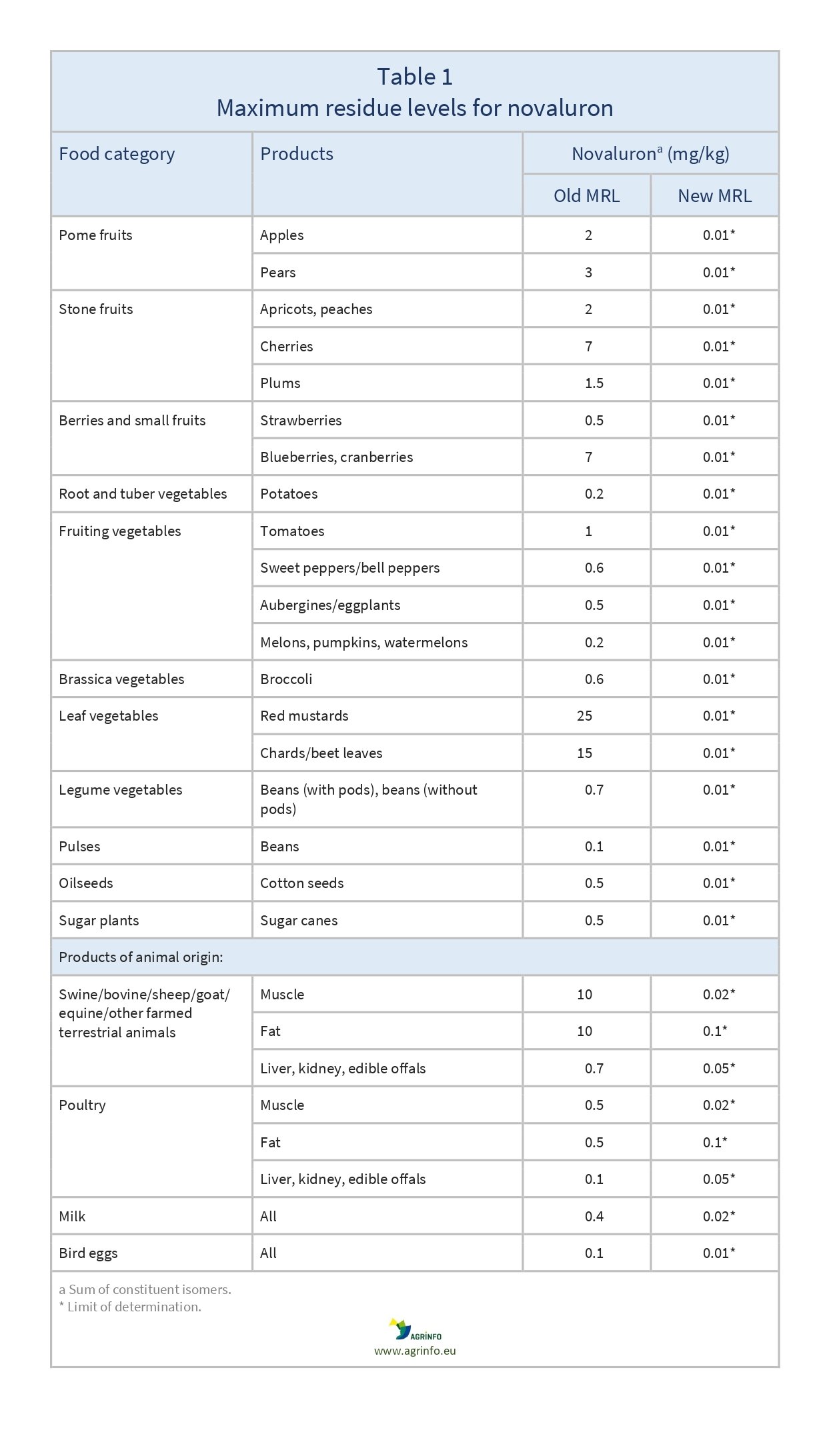Maximum residue levels for novaluron
- Pesticide MRLs
Summary
The EU has reduced the MRLs for novaluron to the limit of determination (LOD, the lowest level that can be detected using the most modern and reliable analytical methods) on all products, removing the existing MRLs for a range of fruits, vegetables and animal products.
EU reduces MRLs for novaluron to 0.01–0.1 mg/kg on all products, with implications for fruit, vegetables and animal products
Commission Regulation (EU) 2023/466 of 3 March 2023 amending Annexes II, III and V to Regulation (EC) No 396/2005 of the European Parliament and of the Council as regards maximum residue levels for isoxaben, novaluron and tetraconazole in or on certain products
Update
The EU has reduced the MRLs for novaluron to the limit of determination (LOD, the lowest level that can be detected using the most modern and reliable analytical methods) on all products, removing the existing MRLs for a range of fruits, vegetables and animal products.
Impacted Products
apples, pears, apricots, peaches, cherries, plums, strawberries, blueberries , cranberries, potatoes, tomatoes, sweet peppers/bell peppers, aubergines, eggplants, melons, pumpkins, watermelons, broccoli, red mustards, chards/beet leaves, beans (with pods), beans (without pods), beans, cotton seeds, sugar canes, animal products
What is changing?
The amendments to existing novaluron MRLs are set out in Table 1.
In addition, for herbs and edible flowers, the LOD is increased from 0.01 to 0.02 mg/kg; and for teas, coffee, herbal infusions, cocoa and spices, the LOD is increased from 0.02 to 0.05 mg/kg.
Why?
Following a review of novaluron, EFSA (2022) reported that there were data gaps on toxicology, and uncertainties regarding possible endocrine disruptor properties. It was concluded that harmful effects on human health related to novaluron could not be excluded, and all MRLs should be set at the LOD.
Timeline
The new MRLs apply from 26 September 2023. For products exported before that date, the old MRLs still apply.
Recommended Actions
Suppliers to the EU market of fruit and vegetables, cotton seeds, sugarcane and animal products should check the current use of novaluron on these products and seek alternative solutions.
Background
MRLs are set in accordance with the rules set out in Regulation 396/2005. For information on current MRLs for other substances, please consult the EU Pesticide Residues database.
Resources
EFSA (2022) Review of the existing maximum residue levels for novaluron according to Article 12 of Regulation (EC) No 396/2005. EFSA Journal, 20(1): 7041.
Sources
Commission Regulation (EU) 2023/466
Tables & Figures

Source: based on Commission Regulation (EU) 2023/466 and SANTE/10108/2022
Disclaimer: Under no circumstances shall COLEAD be liable for any loss, damage, liability or expense incurred or suffered that is claimed to have resulted from the use of information available on this website or any link to external sites. The use of the website is at the user’s sole risk and responsibility. This information platform was created and maintained with the financial support of the European Union. Its contents do not, however, reflect the views of the European Union.
